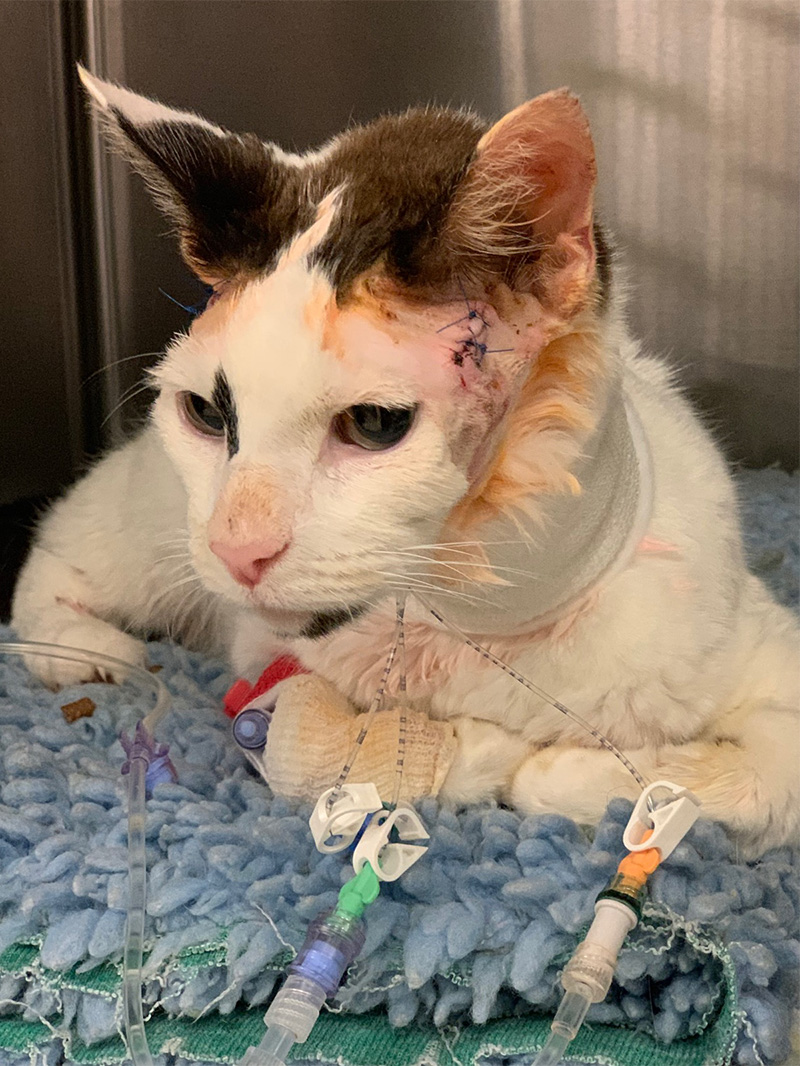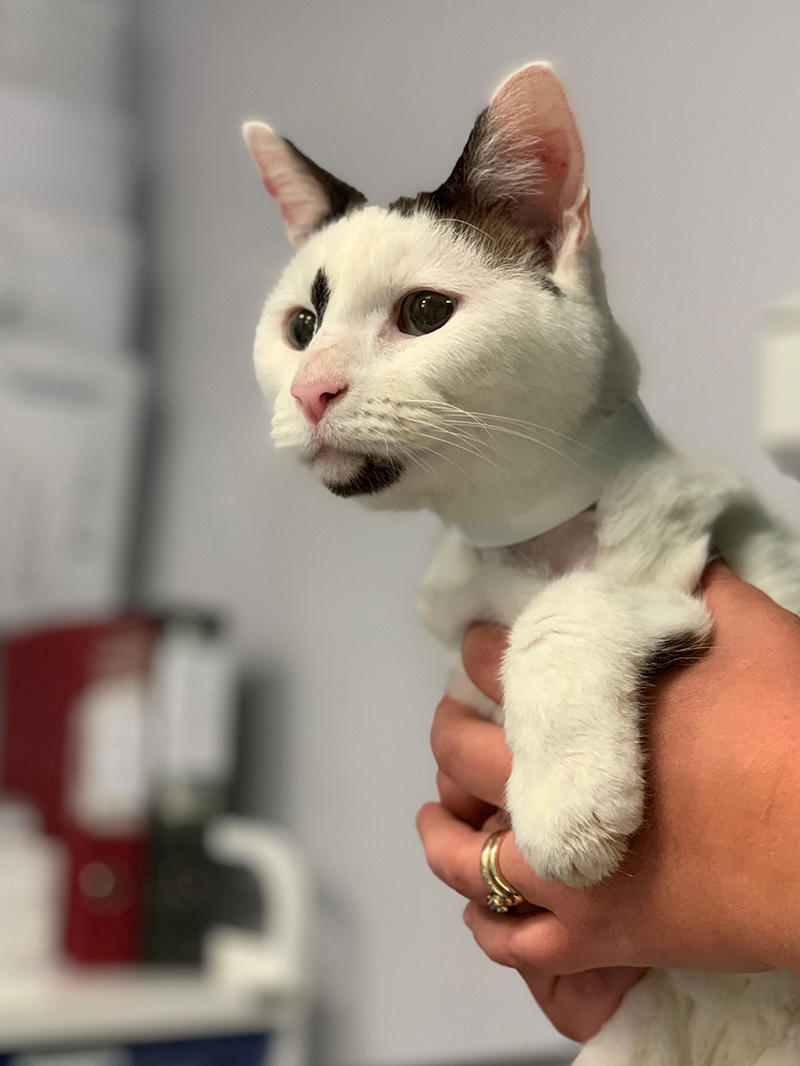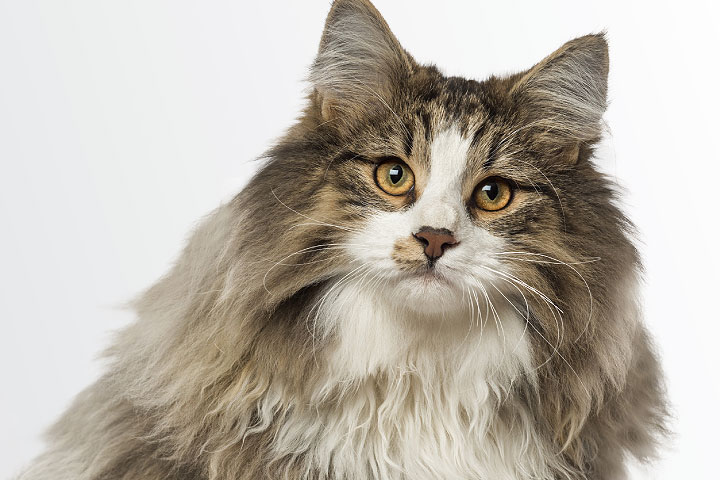acromegaly in cats uk
Acromegaly occurs as a result of excessive growth hormone GH production. Therefore polydipsia polyuria and polyphagia are the most common presenting signs.

Pioneering Hypophysectomy Treatment Reaches 100 Case Milestone
Acromegaly is a relatively rare hormonal condition.
. Worming tablets granules liquids and pastes from as little as 078 per treatment. Medical treatment using pituitary inhibitors. Today in 2019 the most qualified professionals have performed more than 100 surgeries.
Net weight gain of lean body mass in cats with uncontrolled diabetes mellitus is a key sign of. The estimated prevalence of acromegaly in cats in the UK is between 1 in 800 to 1 in 1000. This is the most common method for treating acromegaly in cats.
In most studies at least 23 cats had improved symptoms and 50-92 had improved control of their diabetes. Acromegaly is an endocrine disease that leads to elevated production and secretion of growth hormone GH. Acromegaly in cats causes multiple complications.
Polyuria and polydipsia as well as nocturia and urinary incontinence. Dunning M D Lowrie C S Bexfield N H et al 2009 Exogenous insulin treatment after hypofractionated radiotherapy in cats with diabetes mellitus and acromegaly. Affected cats can develop gradual changes in their appearance but because the disease develops over a.
The disease is therefore likely currently underdiagnosed. Acromegaly is characterized by chronic excessive growth hormone GH secretion by the pituitary gland. Berg R I Nelson R W Feldman E C et al 2007 Serum insulin-like growth factor-1 concentration in cats with diabetes mellitus and acromegaly.
One study has shown that one in three diabetic cats in North America suffers from acromegaly induced diabetes¹. Panacure Drontal Cestem Cazitel. It is caused by a slow-growing functional growth hormone-secreting tumour adenoma of the pituitary gland which is located at the base of the brain.
No breed predispositions have been recognised to date. In dogs it is usually related to an increase in se. Feline acromegaly is also called feline hypersomatotropism.
Unlike growth hormone IGF-1 concentrations are less likely to fluctuate over the course of the day since most IGF-1 is protein-bound giving it a longer half-life in the body. Removal of the tumour and pituitary gland or hypophysectomy. There are three basic methods of treating Acromegaly itself.
Definitive diagnosis can be difficult because of the gradual disease onset subtle clinical signs unavailability of relevant laboratory tests and client financial. The earliest clinical signs in the 14 cats included polyuria polydipsia polyphagia all of which were associated with untreated diabetes mellitus. Prevalence of acromegaly amongst diabetic cats in North America and the UK was found to be around 1 in 4 diabetic cats seen in primary practice.
JVIM 23 2 243-249 PubMed. Serum IGF-1 measurement is the most commonly used diagnostic test for feline acromegaly and is readily available in the United States. Neissen states Acromegaly one of the endocrinopathies in the Hypersomatotropism class is the primary cause of Feline Diabetes in more than 25 of insulin-treated diabetic cats.
Another that one in four diabetic cats in the UK is suffering from the same². Ad Leading brands in stock. Radiation therapy either traditional treatment or Stereotactic Radiation Therapy SRT.
Growth hormone is produced by the pituitary gland by specialised cells known as somatotrophs and is tightly. It can occur in adult and aged cats and is usually associated with neoplasms such as functional pituitary macroadenoma of somatotropic cells. The average cat survived 25 months after SRT meaning that half of the cats lived a longer time and half lived a shorter time.
The veterinary nurse plays a key role in educating owners about acromegaly and the management of affected cats. There is no single diagnostic test for feline acromegaly - a confident diagnosis relies on a combination of clinical signs feline growth hormone and insulin-like growth factor 1 levels and intracranial imaging. Feline acromegaly is most commonly caused by a functional pituitary tumor.
Feline acromegaly occurs in older cats 814 years old and appears to be more common in malesClinical signs of uncontrolled diabetes mellitus are often the first sign of acromegaly in cats. This article describes the pathophysiology and diagnosis of acromegaly in cats and what treatment options are currently available. Thirteen 93 of the cats were male and one was female.
Stjin Neissen of the RVC Feline Diabetes Clinic is leading the charge when it comes to clinical research on the prevalence of FD and Acromegaly in cats. Most cats tolerate this treatment very well and have few if any side effects. Sometimes owners will.
Acromegaly was diagnosed in 14 middle-aged to old cats of mixed breeding. These often include unusual growths in the cats face abdominal enlargement and cardiomyopathy or heart disease. Acromegaly should be considered as a possible cause of.
This article describes the pathophysiology and diagnosis of acromegaly in cats and what treatment options are currently available. It can be caused by excessive hormone production in the brain or in mammary gland breast tissue. Additionally the ideal treatment protocol has yet to be.
The earliest witnessed signs tend to be those of unregulated diabetes mellitus. Acromegaly due to excessive hormone production in the brain is more common in cats than dogs. The veterinary nurse plays a key role in educating owners about acromegaly and the management of affected cats.
The prevalence amongst non-diabetic cats is currently unknown although these cats would be expected to become diabetic in the long-run. This treatment is not used often today. In 2012 the Royal Veterinary College RVC in the UK performed the first successful hypophysectomy surgery to treat a cat with acromegaly.
The estimated prevalence of acromegaly in cats in the UK is between 1 in 800 to 1 in 1000. All developed severe insulin resistance within a few months. Acromegaly is a rare disease caused by an overproduction of the growth hormone GH.
Acromegaly should be considered in any diabetic cat with.

Acromegaly In Cats The Veterinary Nurse

Fred The Wonder Cat Arun Veterinary Group

Acromegaly In Cats The Veterinary Nurse

Pdf Acromegaly In A Non Diabetic Cat

Acromegaly In Cats The Veterinary Nurse

Pioneering Hypophysectomy Treatment Reaches 100 Case Milestone

Feline Acromegaly Endocrine System Msd Veterinary Manual

Acromegaly In Cats The Veterinary Nurse

Acromegaly In A Non Diabetic Cat

The Management Of Feline Hypersomatotropism Hs Acromegaly

Acromegaly In Cats The Veterinary Nurse

Woman Begs People To Stop Blaming Her For Her Fat Cat S Massive Size Metro News

Acromegaly In Cats The Veterinary Nurse

Example Of A Cat Before And After Onset Of Hs Induced Changes Photo A Download Scientific Diagram

A Male European Shorthair Cat At A 11 Years Of Age And At B 14 Download Scientific Diagram

A 17 Year Old Male European Shorthair Cat At Time Of Presentation When Download Scientific Diagram